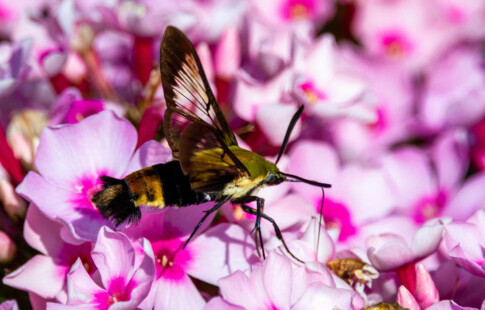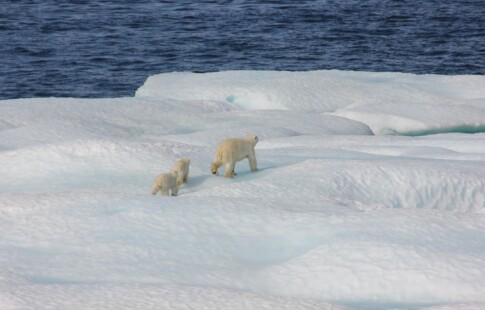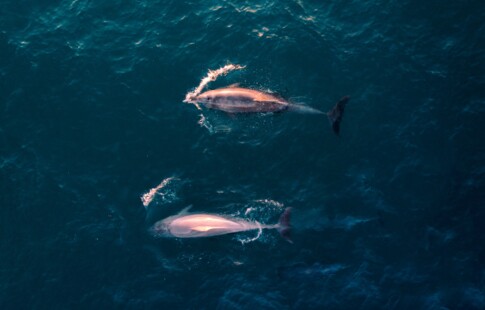
Different Habitat Types and How You Can Protect Them
We are reader-supported. When you buy through links on our site, we may earn affiliate commission.
Animals, plants and other living things are around you. Whether you live in a rural area or a big city, you’ve experienced wildlife at some capacity in your life. Different regions of the world contain their unique plant and animal species. These species have adapted to the conditions around them to create an ecosystem where they can thrive. Below are some examples of different habitat types and how you can help protect them.
What Is a Habitat?
First, you need to understand what’s all included in a habitat. Consider your home, for example. Over the years, you’ve cultivated it to fit your needs. There are separate rooms for you and anyone else that lives there. Additionally, you have food, water and shelter. Maybe you interacted with other people in your home, too.
The same is valid for natural habitats. A habitat is a home or environment for plants, animals and other living things. Habitats provide them with the necessary means for survival, including food, water, shelter and space to thrive and interact with the other beings in the habitat.
There are so many types of habitats throughout the world. These habitats can be on land or in the water. Each habitat type determines which kinds of species live there. Suitable habitats will provide enough space, food, water and shelter options for each animal and plant that resides there.
Marine
Oceans cover a majority of the Earth’s surface. They have the largest habitat due to their depth. The seas and oceans carry various plants that may live either at the surface of the water or deep below. Marine habitats depend on saltwater and light for survival.
Within the marine habitats lie niche ecosystems. These include shallow coastal waters like estuaries and bays, and they also include coral reefs. Coral reefs have more biodiversity than the rest of the ocean they’re part of, even though they’re a smaller habitat.
Freshwater
Rivers, ponds, lakes, creeks, streams and wetlands are all types of freshwater habitats. Each supports a unique set of plants, animals and microorganisms that work together to support one another. Only three percent of the world’s water is freshwater, making these habitats a bit rarer.
However, freshwater habitats still maintain a variety of species that add up well over 100,000. Fish are the primary animal in freshwater ecosystems, but they also include alligators, frogs, turtles, beavers, otters and plenty of insects. Unfortunately, freshwater habitats are some of the most endangered in the world and need protection.
Deserts
On the opposite spectrum of habitats are deserts. Deserts are the driest places on Earth. They get very little rain every year and are typically covered in sand. Many deserts get extremely hot during the day and naturally reach over 100-degrees Fahrenheit. At nighttime, though, the temperatures significantly drop because there aren’t clouds or water vapor present to hold in the heat.
Animals and plants in the desert have adapted so they can survive with little to no water. For example, camels store water in their humps, and cacti similarly store water. Animals may stay underground or under rocks during the day to stay cool.
Grasslands
Grasslands are typically made up of grasses and have a few larger trees and shrubs. There are tropical grasslands and temperate grasslands. Grasslands appear throughout the globe, with some in the African Savannah and Midwest region of the United States.
Animals in grasslands contain some hooved animals and their predators. They go through many rainy and dry seasons throughout the year and are vulnerable to fires.
Forests
There are multiple types of forests, and they take up about one-third of the Earth’s surface. Forests can be temperate, tropical, cloud, coniferous and boreal. Each has a diverse climate as well as species of animals and plants.
Trees cover forest habitats. They contain plenty of bird, mammal and insect species and are biodiverse. Each forest type is home to multiple layers that make up the forest, including an emergent layer, canopy, understory and the forest floor.
Mountains
Mountains form when tectonic plates meet, pushing land up to create peaks of all heights. Other mountains form as a result of volcanic activity. When the lava cools, it creates layers that eventually become a mountain.
A mountain’s habitat is unlike any other. At the base of a mountain, there are often deciduous forests filled with various animals and plants. However, the further you go up a mountain, the less diverse it gets. The air becomes thinner, meaning animals and plants cannot survive at the top.
Tundra
The tundra is a cold habitat. It has permanent low temperatures, very little vegetation, long winders and some extreme wildlife that survive there. Even though it is cold and covered in snow, some species have adapted to the conditions.
Two tundras exist. One is the arctic tundra, and the other is the alpine tundra. Usually, you’ll see permafrost in the tundra. The rock and soil beneath the snow, if there is any, will remain frozen year-round. If it does defrost, the ground becomes unstable because there is poor drainage.
Protecting the Habitats Around You
Habitats around the world are in danger. Some have lost significant biodiversity over the years due to climate change and urbanization. Fortunately, you can help the habitats in your backyard to help them build resilience.
Do your part to protect these precious environments. Grow native plants when possible, avoid using chemical pesticides and fertilizers, reduce, reuse and recycle, and spread awareness about the importance of conserving and protecting natural habitats. Continue educating yourself about habitats and support organizations that protect them.
Want to test your knowledge of habitats? Take our quiz below to see if you’ve become a habitat expert!
[HDquiz quiz = “58”]
Share on
Like what you read? Join other Environment.co readers!
Get the latest updates on our planet by subscribing to the Environment.co newsletter!
About the author
Jane Marsh
Starting from an early age, Jane Marsh loved all animals and became a budding environmentalist. Now, Jane works as the Editor-in-Chief of Environment.co where she covers topics related to climate policy, renewable energy, the food industry, and more.





